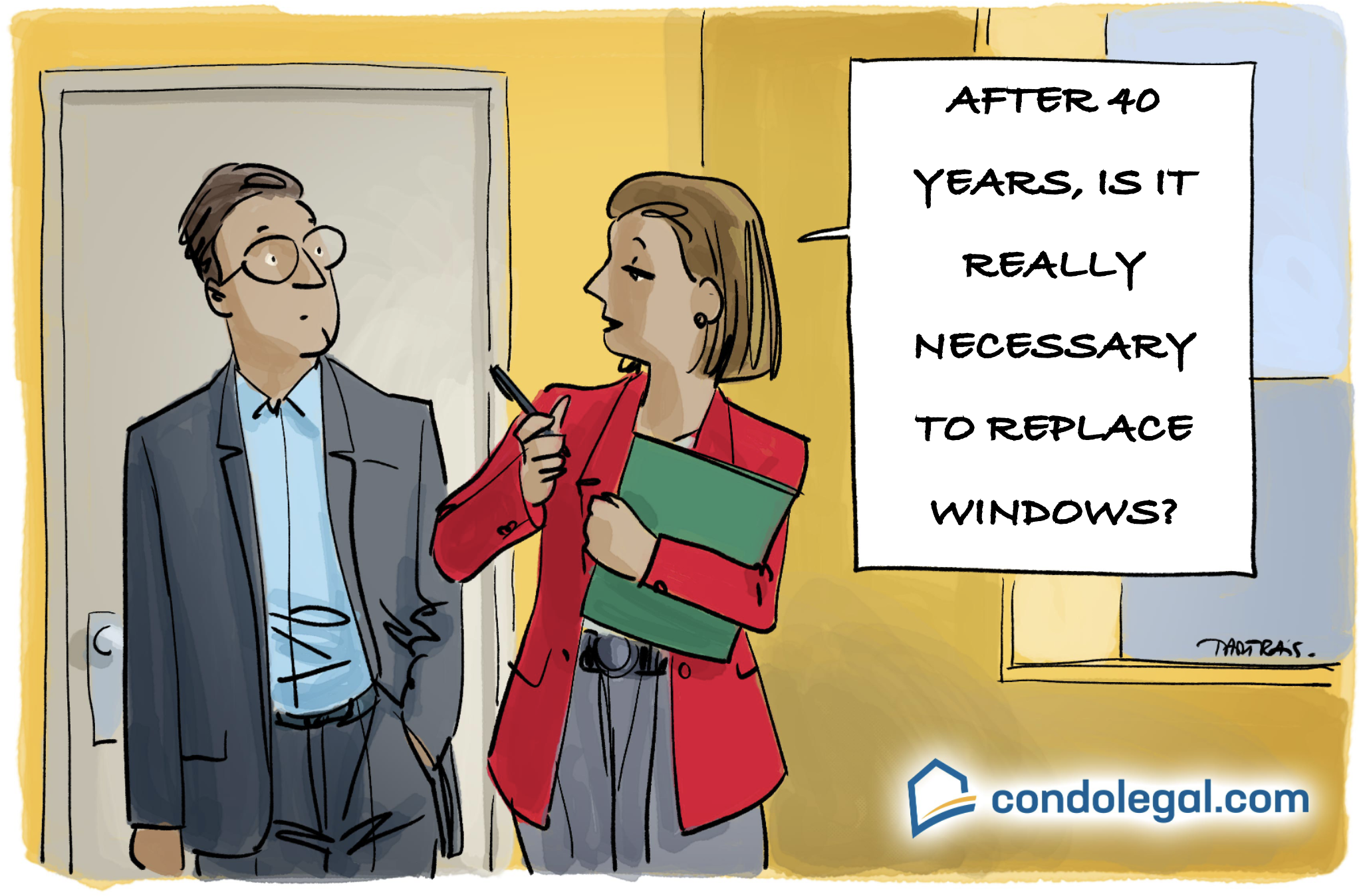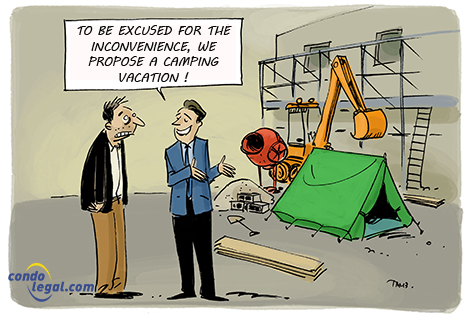Date published: 28/06/2024
Work in the common portions for restricted use
 As in common portions, work can be carried out in common portions for restricted use, such as building a terrace upon which a co-owner would have exclusive use or transforming a balcony into an additional room attached to an apartment. If such cases, the co-owners must keep in mind that article 1063 of the Civil Code of Québec governs the use they can make of the common portions for restricted use. This article stipulates that: "Each co-owner has the disposal of his fraction; he has free use and enjoyment of his private portion and the common portions, provided he complies with the by-laws of the immovable and does not impair the rights of the other co-owners or the destination of the immovable. "
As in common portions, work can be carried out in common portions for restricted use, such as building a terrace upon which a co-owner would have exclusive use or transforming a balcony into an additional room attached to an apartment. If such cases, the co-owners must keep in mind that article 1063 of the Civil Code of Québec governs the use they can make of the common portions for restricted use. This article stipulates that: "Each co-owner has the disposal of his fraction; he has free use and enjoyment of his private portion and the common portions, provided he complies with the by-laws of the immovable and does not impair the rights of the other co-owners or the destination of the immovable. "
Exclusive non-proprietary right of use
Co-owners generally have a right of use and enjoyment (temporary or permanent) in common portions for restricted use. This prerogative should not be confused with a ownership right. Even though some common portions for restricted may be reserved for a limited group of persons or even only one person, they are nevertheless governed by the same rules as those applicable to common portions. Therefore, the work to be carried thereon must be authorized by the syndicate of co-owners and remain under its control, through the competent decision-making bodies that will dictate the guidelines thereof.
Misunderstanding and confusion
This peculiarity of co-ownership law can be a source of misunderstanding and confusion, especially when the common portions for restricted use (e.g. balconies, terraces and windows) are located nearby the private portions. Thus, it often happens that a co-owner is tempted to start work without asking the syndicate for its prior authorization.
Such work may be to improve a common portion for restricted use, such as planting trees in the backyard. But by doing so, a co-owner is making use of the collective property (reserved for one or a limited number of persons) as if it was his own. In fact, the syndicate must first approve the work, after which it will supervise its execution. The same goes for repairs, enlargement or alteration work. As for the maintenance of common portions for restricted use, the declaration of co-ownership could provide that a co-owner would be responsible for it.
In the event that the declaration of co-ownership is mute in this regard, it is in the syndicate’s best interest in providing rules that will determine who does what in the common portions for restricted use. In addition, one must keep in mind that depending on the projected work, the board of directors or the general meeting of the co-owners will need to approve or to dis approve it.
Two indispensable tools: The Cadastral plan and the Certificate of location:
To be aware of the applicable rules regarding work to be carried out, it is necessary to refer to the boundaries between privative and common portions which appear in the cadastral plan, or in the certificate of location of a privative portion. If these documents prove difficult to interpret, it is better to call upon an experienced professional in co-ownership law, which will know how to decipher them.
 WHAT YOU SHOULD KNOW ! Although the co-owner has the exclusive enjoyment of a common portion for restricted use (e.g. a balcony or a backyard), he cannot make the amenities he wishes without obtaining the agreement of the syndicate. The work of alteration, enlargement or improvement of the common portions, or the work that has the consequence of modifying the destination of the immovable require the authorization of the meeting of the co-owners.
WHAT YOU SHOULD KNOW ! Although the co-owner has the exclusive enjoyment of a common portion for restricted use (e.g. a balcony or a backyard), he cannot make the amenities he wishes without obtaining the agreement of the syndicate. The work of alteration, enlargement or improvement of the common portions, or the work that has the consequence of modifying the destination of the immovable require the authorization of the meeting of the co-owners.
 WHAT TO KEEP IN MIND : Before carrying out any work in what he believes to be his private portion, any co-owner should consult his certificate of location or the cadastral plan. He will ensure, in doing so, not to act in contravention to the provisions of the declaration of co-ownership.
WHAT TO KEEP IN MIND : Before carrying out any work in what he believes to be his private portion, any co-owner should consult his certificate of location or the cadastral plan. He will ensure, in doing so, not to act in contravention to the provisions of the declaration of co-ownership.
 WARNING ! Having work carried out in a common portion for restricted use, without having obtained the authorization required from the syndicate, can have dire consequences. The board of directors may require the co-owner who has taken such an initiative to return the premises to their original state (at his expense). This is sometime the ruthless reality, even in the case of high quality work that significantly improved the affected area.
WARNING ! Having work carried out in a common portion for restricted use, without having obtained the authorization required from the syndicate, can have dire consequences. The board of directors may require the co-owner who has taken such an initiative to return the premises to their original state (at his expense). This is sometime the ruthless reality, even in the case of high quality work that significantly improved the affected area.
Back to the mega-factsheet: The work of the syndicate





